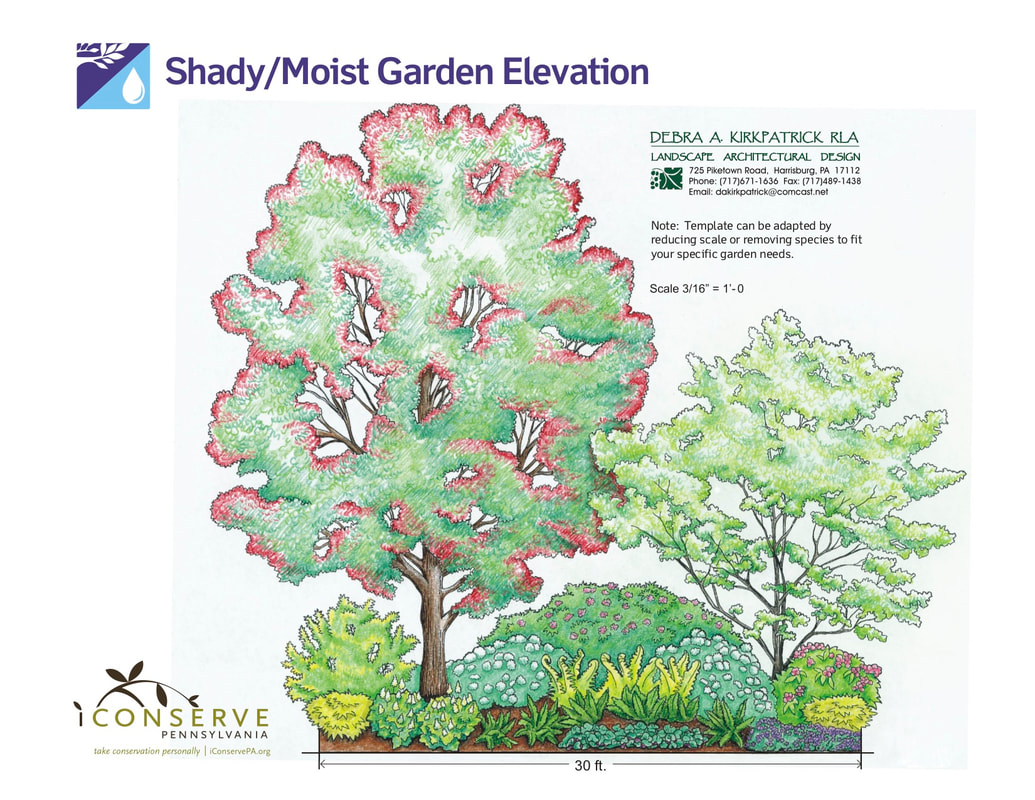|
Native plants in a suburban garden get a bad rap. Natives have a reputation for being messy and hard to manage because they are often planted with perennials. Some gardeners leave their perennials to dry, which attracts birds. Others run out of time in the fall and wait to cut back their plants in the spring, leaving untidy beds. Regardless of your gardening style, native perennials, shrubs, and small trees deserve a place in your garden, according to Kate Brands, author of the book: Native Plants for the Small Yard. She says that natives are beautiful, have many ecological benefits and fit well into a residential landscape. Let’s explore why. A plant is considered a native if it has occurred naturally in a particular region, ecosystem or habitat without human introduction. Ideally your native plant selection should first start in your region then expand to larger reference areas. To illustrate, let’s start with Pittsburgh, where Holly and I live. When I design a landscape, I start by selecting plants from Western, PA. If necessary, I’ll expand my search to native plants that grow across the entire state. Finally, should my client have a very specific need, then I expand the search to those which are native to North Eastern US, then to North America. Plants introduced during colonization by Europeans or in trade with South America, Africa or Asia are NOT native. Pennsylvania plants are primarily deciduous, so to create a foundation planting that has winter interest, we sometimes expand our tolerance for native plants to include evergreens from the broader North America. For a small city yard which has growing conditions in a zone higher than the suburbs due to radiant heat reflected from paving and brick, we occasionally consider native plants slightly south of our region.  Why use native plants? According to Kate Brands, at least one third of the world’s food supply is dependent on pollinators. Aside from the well-known honeybee there are thousands of species of native bees, wasps, moths, butterflies and other insects in North America that are important for pollination of our food. These native pollinators depend on native plant species for survival. Non-native plants are not part of this food chain. For example, most species of native caterpillars rely on native plants. In keeping with the idea of a food chain, many birds rely on these native caterpillars. One nest of baby chickadees requires 350 to 570 caterpillars every day, depending on how many chicks there are. So, an incredible 6,000 to 9,000 caterpillars are required to raise one clutch of chickadee to adults. Almost all baby birds require insects like caterpillars to grow, even birds that mature into seedeaters. What we plant in our landscapes determines what can live in our landscapes. There are many other reasons for going “native.” Beauty is made easy. Native plants have a more subtle color palette that mimics nature, so they look naturally beautiful and unified to our eye when grouped together. Choosing a wide assortment of plants also ensures seasonal interest, with the bonus of attracting colorful birds and butterflies. Many people support the local food movement. Native plants are a keystone species for growing local food since so many pollinators depend on native plants to survive. Nature, which inherently includes native plants, gives people a sense of place. These plants are tied to the landscape and culture of our local area. Native plants have less need for herbicides and pesticides, resulting in a healthier yard for your family and pets. Native plants co-exist with nature rather than competing with it, so they’re often easier to maintain than nonnative species. When used in stormwater management projects, native plants hold stream banks in place, prevent erosion, absorb water, and filter pollutants from our waterways. Natives can also be used as alternatives to commonly sold invasive plants. This graphic is from Kate Brand’s book (Pennsylvania Natives): Information rich resources include the websites listed below. They offer adjustable plans, plant lists for a variety of conditions as well as growing conditions for each plant. The most challenging part of using natives in a small space is choosing trees. Often native shrubs will grow into small trees. For small yards, it is important that each plant works for the real estate it uses. Trees and shrubs should have at least two, and better yet, three seasons of interest. For example a chokeberry has spring flowers, summer berries and fall color.
Hopefully, we’ve made a strong case for integrating native plants into your home landscape. Natives are ideally suited for your local growing conditions. Many natives are keystone species, which are a vital link in the food chain. And lastly, natives are beautiful, require fewer pesticides, and are uniquely suited for water mananagement. Look for displays of natives at your local nurseries and public gardens.
0 Comments
Your comment will be posted after it is approved.
Leave a Reply. |
Thank you for finding us! Holly and I have collaborated to bring you informative, fun, and seasonal garden inspiration blogs.
Subscribe to receive our blogs on the 1st and 15th of the month--Gwen Follow my landscape & garden design Pinterest Page to see more pics, inspiration and Gwen's home garden journey!
AuthorsGwen Wisniewski: Landscape and Garden Designer. Contact me. Let me help you integrate these garden inspirations. Choose the links below to find out more about my landscape design service or to make an appointment. |










 RSS Feed
RSS Feed